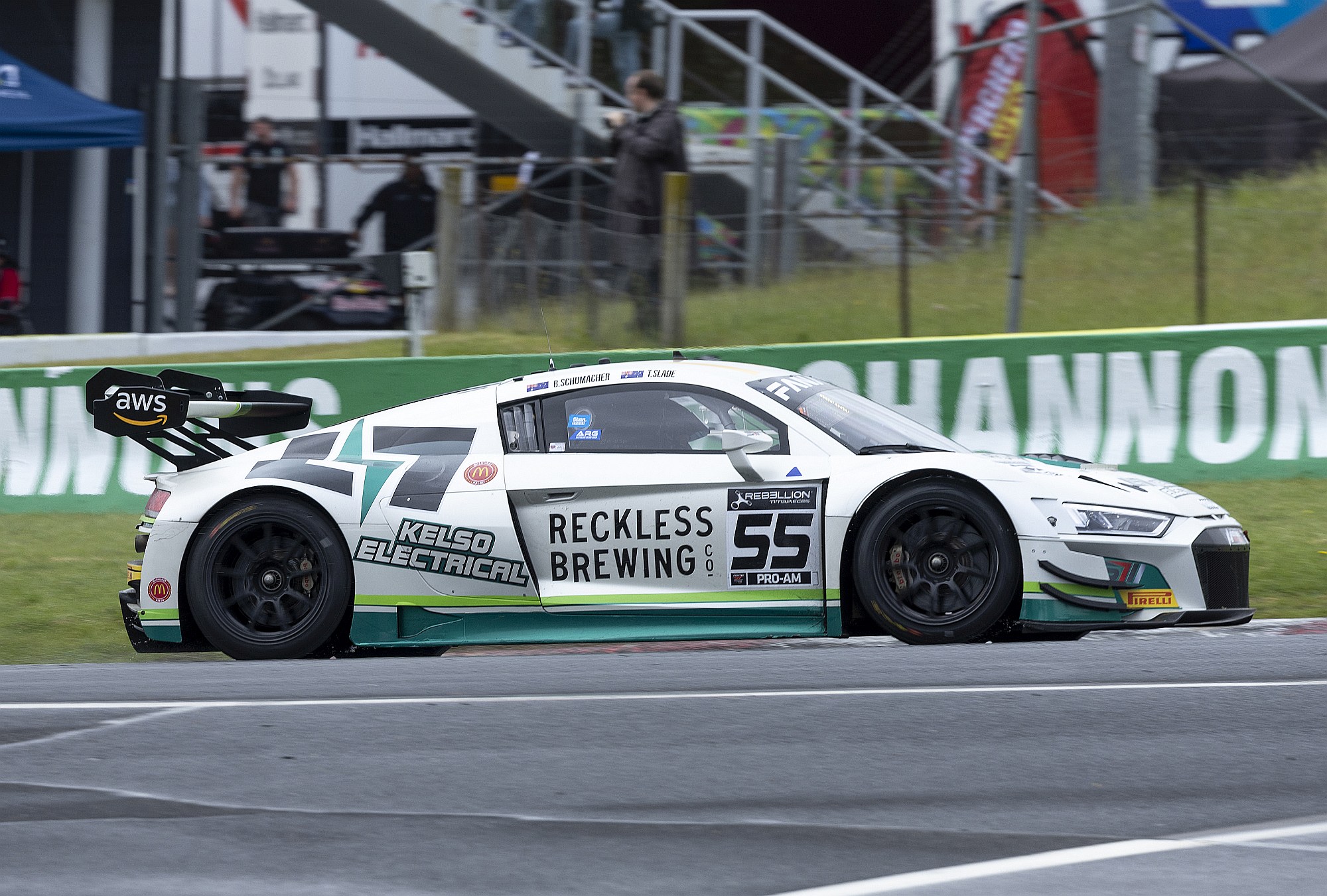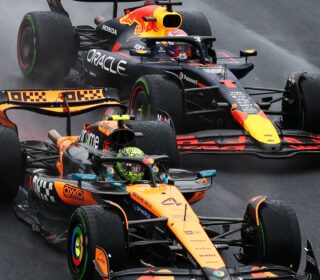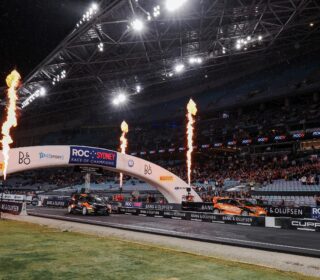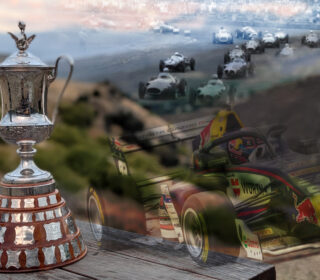Can the 12 Hour field go 2000km?

THERE’S lots to take in at the 2023 LIQUI MOLY Bathurst 12 Hour, with a host of storylines set to unfold across the race week as usual.
Here are some of the more interesting subplots worth following across the on-track sessions later this week…
The new tyre and its impact
PIRELLI, the control tyre supplier to the 12-Hour since 2017, will bring a new compound to the Mountain for the first time this year.
Pirelli’s P-Zero DHF compound was introduced into Global GT racing last year, however, is yet to make its way to Australia given the existing stock and the global supply chain issues surrounding the Pandemic.
As such, the 12-Hour will be the first event in Australia to utilise the new compound, which has been well received by teams in Europe and North America.
The new tyre is said to be quicker than the outgoing model, with better performance across a stint length. It’s also manufactured from more sustainable products.
How teams adapt to the new rubber – and how it deals with the notoriously temperature-sensitive Mount Panorama circuit – will be a key storyline this week.
A majority of Aussie teams tested on the new tyre at Phillip Island last week, however, that will be hard to match the full season’s worth of running the likes of WRT, GruppeM, Manthey EMA and Craft-Bamboo will bring.
It will be one of the big stories of the week.
How quick will they go?
COUPLED with the addition of the new tyre is the age-old Bathurst story of ‘just how quickly will the cars go?’.
2022 bucked a trend of decreasing ultimate lap time in qualifying, Chaz Mostert’s 2m02.4s lap a full second quicker than Matt Campbell’s 2020 pole.
Much of the way speed is produced in GT3 cars at Mount Panorama is based on track temperature and while 2020 produced a distance record – and as such the third-fastest race in Bathurst history – it still had slower ultimate lap times than the two years prior thanks to the scorching heat and the gradual aging of a nearly 10-year-old surface.
In the past, lap times have dropped by almost a second when cloud cover replaces direct sunlight such as the UV impact on the circuit so it plays a role.
Last year was the opposite; freezing temperatures required long tyre warm-up processes to get them into an operating window – but once they were, they were quick.
With milder conditions forecast (for now) this week, the new tyre compound and a deep mix of Pro teams and drivers pushing hard, will we see GT3 cars back into the 2m01s for the first time since Chaz Mostert’s 2018 pole lap?
Or will they go quicker?
Can they get to 2000 Kilometres?
THERE are two ‘Everest’s’ to climb for GT3 cars at Mount Panorama.
Can they go sub 120 seconds – two minutes – in 12-Hour trim, and can they go 2000km in 12 hours?
Both are possible, but a lot would have to go right for them to happen.
The 2000km milestone isn’t that far off: the distance record of 1,950.8km (314 laps) was set in 2020.
To get to 2000km means the teams need to find just nine laps across 12 Hours to clock over the milestone, with a 322-lap race totalling 2000.586km.
To do that, the field would have to run at a breakneck pace – averaging just under 167km/hr across the entire race.
Keep in mind, the quickest 1000 kilometres covered in Bathurst history came in the 2018 Bathurst 1000, with winners Craig Lowndes and Steven Richards competing that race in 6 hours 1 minute and 44 seconds.
To do 2000km, the winners must complete the quickest 1000km race in history – twice. In a day.
A big ask, but not impossible.
In 2020, Maxime Soulet was behind the wheel when the #7 Bentley Continental GT3 crossed the line to complete the 161st lap – 1000km – 6 Hours, 16 minutes and 5 seconds into the race.
However, guess how many laps they completed in the final six hours of the race?
Yep, a gold star for you: it was 161.
1000km.
It’s also worth noting that the final six hours of the of the 2020 race featured 37 minutes of Safety Car.
When you consider that to complete the additional nine laps the field needs to reach 2000km would take about 19 minutes, all of a sudden 2000km doesn’t seem unrealistic at all.
Pro versus Pro-Am
AFTER an entirely Pro-Am race in 2022, we had a fascinating insight into the best way to manage the race with a mixture of Professional and semi-pro drivers.
This year, those teams in the Bausele Pro-Am class will return to going head-to-head with fully professional squads as the Pro class returns.
Managing the non-professional component in each Pro-Am car will be key, and no doubt some luck will be involved.
But such is the talent of drivers within the Pro-am ranks – Whincup, Stanaway, Reynolds, Holdsworth, de Pasquale, Love, Golding, Vervisch and more – if they can get their car into position for the final five hours – remembering the ‘Am’ has to do a minimum of 60 minutes in the second half of the race – then they are absolutely as good an outright shot as any of the ‘fully Pro’ cars.
It’s going to be fascinating, and don’t bet on some of the Pro-Am class cars placing very highly in the outright leaderboard next weekend.
The impact of the ‘Lucky Dog’
LOVE it or hate it, the Wave-around rule – dubbed the ‘Lucky Dog’ thanks to its introduction in NASCAR – is here to stay.
Teams that go a lap down will be looking for every opportunity to get a prized lap back and keep themselves in the fight – and it could be the best way for Pro-Am cars to remain in outright contention.
It’s in effect from the start of the third hour to the start of the final hour of the race, so watch for Safety Cars and check the lap scoring should they appear.
Remember, though, cars that get the wave-around don’t get a full lap back; once they’re all clear, the lights on the Safety Car go out and the field gets back underway – so the cars go from being a lap down to more likely two minutes behind.
Still, it could make a difference.
Weather
LAST but not least is Bathurst’s notoriously fickle and changeable weather.
We’d write more about it, but if we did we would just have to go and edit it in a few minutes anyway.
A week ago they were forecasting 40mm for the race weekend but as we type this it’s looking fine.
Who knows what it will be in a week, but it’s one of the reasons you just have to be there to see the race unfold – or be locked into your lounge.
There’s one thing you can say about the Mountain’s weather: It’s consistently inconsistent.







